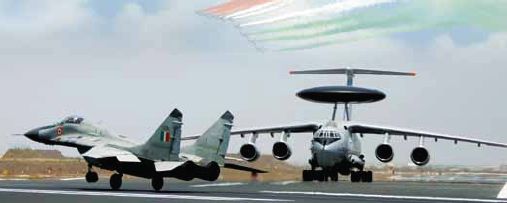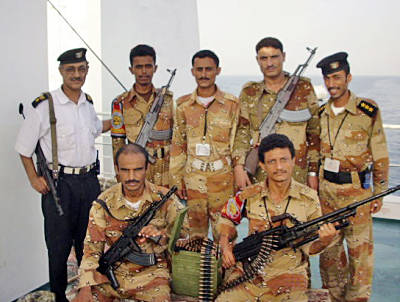HAL Nasik is expected to complete delivery of the 272 Su-30MKI on order by 2014. Meanwhile, test flights on the T‑50 are progressing satisfactorily in Russia. However, the twin-seat FGFA on which Indian and Russian designers are working jointly, will practically be a new aircraft. The stipulated time frame of 2017 for the commencement of its induction may only be tentative as there may be impediments not uncommon in the development programmes for new aircraft. There is also talk of the Aeronautical Development Agency (ADA) developing a fifth generation twin-engine Medium Combat Aircraft (MCA). But given the track record of the Indian aerospace industry, development of the MCA in a respectable time frame may well be outside the realm of possibility. The IAF may do well to factor this into their future plans.
Apart from the uncertainties of the indigenous aerospace industry that could adversely affect plans for transformation of the combat fleet, a nagging problem that continues to linger is the inordinate delay in the selection of the vendor for the MMRCA. Initiated by Air Headquarters over a decade ago, the process continues at an excruciatingly tardy pace. Although Dassault Rafael and the Eurofighter Typhoon were shortlisted in June this year after completion of technical evaluation, commercial bids are yet to be opened. There is also the complex problem of “benchmarking of price” yet to be tackled. The Defence Procurement Procedure (DPP) was formulated to be impartial, fair, totally transparent and ensure the best value for money. However, these attributes have not been balanced against the imperatives of national security. There is growing concern in the IAF at the slumberous pace at which the case is being processed by the MoD while its combat potential continues to erode. If at all the MMRCA is finally a reality, on account of the interminable delay in procurement, the aircraft might well be due for midlife upgrade or overtaken by obsolescence before induction. Besides, the possibility of the tender being cancelled cannot be ruled out at this stage, given the dilemma of decision making by the controlling bureaucracy in the uncertain political climate prevailing in the country.
Airlift capability
The scenario in respect of the strategic and tactical airlift capability is somewhat reassuring. A US$ 4.1 billion deal has been concluded with Boeing through the US Government’s Foreign Military Sales route for ten C17 Globemaster III, the most capable strategic military transport aircraft in the world to replace the ageing IL-76 fleet inducted in the mid eighties. Another seven are likely to follow in due course. HAL has also entered into a joint venture with United Aircraft Corporation of Russia to co-develop a Multi-role Transport Aircraft of 20-tonne payload capacity as replacement for the 100 AN-32 aircraft inducted in the mid eighties. Being a completely new platform, the stated time frame of 2019 for induction may be over optimistic. In the meantime, the IAF will have to manage with the AN-32 fleet currently undergoing midlife upgrade.
 |
Rotary wing
On the rotary wing front, proposal from the IAF for over 200 helicopters to replace the ageing fleet of Cheetah and Chetak through imports and production by HAL of a three-ton class machine, is progressing at a snail’s pace. Action is also in hand to procure 15 heavy-lift helicopters to replace the defunct MI-26. Tenders have also been floated for the second time for the replacement of the obsolete MI-35 Attack Helicopters. In the meantime, induction of the 80 MI17 V5 helicopters ordered earlier, has begun in March 2011. These will augment / replace the ageing fleet of 150 MI8 / MI17 helicopters on the inventory. HAL has been successful with the five-tonne medium capacity Advanced Light Helicopter programme, the Dhruv, which are being inducted in large numbers. HAL is also working on the Light Combat Helicopter that resembles the Italian Mangusta.
Force multipliers
While the IAF is set on enhancing combat force levels, it has simultaneously focused on Force Multipliers which include an order for three IL-76 based Airborne Warning and Control System (AWACS) with the Phalcon Radar with options for two more. Also on order are three Embraer 145 jets mounted with indigenously developed Airborne Early Warning & Control (AEW&C) systems. The IAF needs a total of nine such aircraft. These should plug most of the gaps in low level radar cover and strengthen Air Defence considerably. Air Defence cover will also be strengthened through the deployment of Aerostats. The IAF is seeking to double its fleet of six Flight Refuelling Aircraft for which a tender has been floated for the second time. As in the case of all big ticket purchases, this case too is moving at an imperceptible pace.
A nagging problem that continues to linger is the inordinate delay in the selection of the vendor for the MMRCA. Initiated by Air Headquarters over a decade ago, the process continues at an excruciatingly tardy pace. Although Dassault Rafael and the Eurofighter Typhoon were shortlisted in June this year after completion of technical evaluation, commercial bids are yet to be opened
The IAF began its foray in the regime of Unmanned Aerial Systems over a decade ago to boost reconnaissance and surveillance capabilities. Following an agreement with Israel in 1996, the IAF received the medium altitude Searcher II and subsequently the high altitude Heron. In 2009, Israel Aerospace Industries (IAI) unveiled to the world for the first time the Harop Unmanned Combat Aerial Vehicle in the run-up to Aero India 2009 international air show at Bengaluru. Ten of these are to be inducted into the IAF. Meanwhile the Aeronautical Development Establishment has produced the Nishant (equivalent of the Searcher I) and is currently developing the Medium Altitude Long Endurance UAV (equivalent to Searcher II). The IAF is scheduled to get its first dedicated communications satellite by the end of 2012. This will substantially augment ground-based Integrated Command and Control Systems and enhance its war-fighting capability through better net-centricity.
The problem within
Echoing the sentiments of his predecessor, Air Chief Marshal N A K Browne who assumed charge as the Chief of the Air Staff recently stated “The IAF is well poised on the path of transforming itself into a potent strategic force.” The statements emanating from the top echelons of the leadership in the IAF undoubtedly reflect confidence and optimism about the future of the IAF. However, the effort at the contemplated transformation of the IAF into a modern aerospace power in a practical time frame, will face challenges from the controlling politico-bureaucratic systems that are perhaps as daunting as those from the enemy.
HAL has entered into a joint venture with United Aircraft Corporation of Russia to produce a customised twin-seat version of the Russian T‑50 PAK FA. Referred to as the Fifth Generation Fighter Aircraft (FGFA), the IAF is expected to get around 250 (14 squadrons) with induction beginning in 2017. This fleet will in due course replace the 17.5 squadrons of third generation aircraft that have been in service with the IAF for over 25 years. These include the MiG-27, MiG-29, Jaguar and the Mirage 2000
About the Author:
Air Marshal B K Pandey PVSM, AVSM, VSM (retd)
The writer is former AOC-in‑C HQ Training Command, IAF, Bengaluru and served for three years in a Diplomatic Assignment at the Indian Embassy during the years of turmoil (1989–1992) in war-torn Afghanistan. He was responsible for setting up the only English Medium School in Kabul at that point in time. He has also been Operations Manager at ARC, an intelligence organisation.
Defence and Security Alert (DSA)
Defence and Security Alert (DSA) magazine is the only ISO 9001:2008 certified, premier world class, new wave monthly magazine which features paradigm changing in-depth analyses on defence, security, safety and surveillance, focusing on developing and strategic future scenarios in India and around the world.

 von
von 